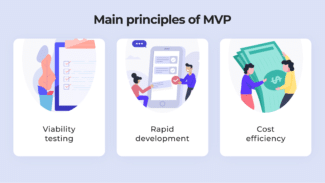A database is no less than the heart of any software solution. It’s a critical element whose potential issues can considerably affect the operation, performance, and overall security of your software. Understanding these issues becomes an indispensable requirement for everyone in the software development or management industry, including entrepreneurs, developers, or system admins. This understanding is not just about problem-solving; it’s about foreseeing potential complications and designing preemptive measures to enhance your software’s robustness and reliability. For those seeking guidance on online services activation, don’t forget to refer to our in-depth jetbluemastercard.com/activate guide that meticulously explains the Barclaycardus Activation process.
Addressing Slow Performance
Software performance directly influences user experience. Imagine a scenario where a user tries to retrieve some information from your software, and the database takes forever to respond. This sluggish performance can lead to user dissatisfaction, causing them to abandon the software altogether. Slow performance can stem from a myriad of issues – unoptimized queries, hardware limitations, network latency, and more. Understanding these bottlenecks, diagnosing their root causes, and addressing them promptly can substantially boost your software’s performance, thus enhancing the overall user experience.
Data Inconsistency
Data inconsistency is like a hidden beast lurking in your software environment. With several databases interconnected in complex software systems, maintaining consistency across all of them is a formidable challenge. Any inconsistency can result in flawed data analyses, leading to incorrect business decisions and a poor user experience. However, all hope isn’t lost. Efficient database management practices, including the use of proper consistency algorithms, can mitigate these problems, ensuring the integrity and reliability of your data.
Fortifying Software Against Security Vulnerabilities
In this modern digital era, cyber threats have evolved to be more complex and insidious. Therefore, securing your software database against potential vulnerabilities becomes an absolute necessity. Failing to address these vulnerabilities could compromise your data’s integrity and confidentiality, leading to substantial business losses. Regular security audits, implementing robust access control mechanisms, keeping your software up-to-date with the latest patches and updates—these are all parts of a comprehensive strategy to fortify your software against any potential security threats.

Overcoming Software Scalability Issues
Scalability plays a crucial role in the success of any software system. As the user base expands and data inflow increases, your software needs to scale efficiently to handle the amplified demands. Issues in scalability can lead to dire consequences such as severe performance degradation, increased response time, and in extreme cases, system crashes. These problems can hamper business operations and affect user trust in your software. However, these challenges aren’t invincible. By strategizing resource allocation effectively, optimizing database practices, and planning for scalability in advance, you can ensure your software scales smoothly with growing demands, thereby delivering consistent performance even in high-traffic scenarios.
Data Backup and Recovery
In the data-driven world we live in today, data is an invaluable asset to any business. Thus, safeguarding this asset against unpredictable threats like hardware failures, data corruption, or cyberattacks becomes of utmost importance. An efficient data backup and recovery mechanism forms the backbone of this safety net, ensuring the availability and integrity of data at all times. Regular data backups, reliable redundancy plans, and robust disaster recovery protocols can help insulate your data against potential data loss. In essence, these steps help in preserving your data’s sanctity, ensuring business continuity, and maintaining your software’s reliability.
Conclusion
Understanding the potential database issues in software isn’t merely about identifying and fixing them – it’s a far more comprehensive task. It involves gaining an in-depth understanding of these challenges, examining their origins, their impacts on the overall health of your software, and devising effective strategies to counteract them. Such a holistic approach enables you to resolve these issues efficiently and enhances the reliability and performance of your software.
Moreover, this understanding paves the way to foresee and avert future database challenges, making you proactive rather than reactive. It’s like being equipped with a powerful navigational tool that helps you sail smoothly through the ever-evolving and complex sea of software database issues. By delving into each facet of these challenges, we aim to provide you with a robust knowledge base, rich with insights and practical tips.
With this comprehensive understanding, you can approach software database issues with increased confidence and proficiency. You’ll be better prepared to manage these challenges effectively, fostering a smooth and optimal software experience for your users. Additionally, with these tools at your disposal, you can ensure that your software remains robust and efficient, capable of meeting user expectations and adapting to the rapidly changing digital landscape. Ultimately, it’s about empowering you to deliver a high-quality software experience, characterized by reliability, efficiency, and robustness.




